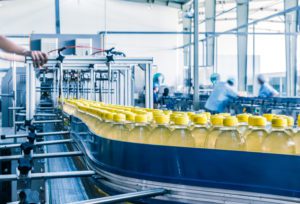Tapping Into Your Manufacturing Data to Drive Continuous Improvement
A version of this article was originally published in Efficient Plant.
The multitude of data that technology captures can be invaluable in uncovering new efficiencies or fixing roadblocks. Between 60% and 70% of data within an enterprise, however, goes unused. Most plants have the tools and data at their fingertips, but realizing their value requires some consideration in the area of connected work. Connected worker technology provides tools that connect people, data, and systems so that organizations can become more adept at decision making, have increased process visibility, and can ensure more agile operations.
Where Is Your Manufacturing Data Coming From?
Manual and automatic are the two types of data that support industrial plants. In the past, manual data was captured on paper. Unfortunately, in some instances, this practice continues. Today’s electronic tools are the answer to this challenge, as they provide a digital and mobile means of manually capturing data. The common first step is to recreate non-digital activity, such as a lock-out-tag-out (LOTO) process, safety walk, or safety incident report, in a digital format using a device that transfers the information to a cloud-based platform. This mobile/digital combination improves operational efficiency and visibility.
For example, with paper-based processes, if a safety incident almost occurs or if a near miss is reported, it would be entered into a database or system of record. From there, the report would be sent to a manager or compliance lead for review and assessment. This individual or team would then need to perform a root-cause analysis to understand how the event occurred.
Because the underlying data was generated by a worker who only wrote down what he/she thought was necessary information, the management team often takes corrective actions based on less-than-ideal input. There are also delays throughout the process, including the inability to quickly and easily share information, time between the issue occurrence and when it is reported to the team, the team gathering the details and performing an analysis, and implementation of corrective actions. Meanwhile, the unsafe actions or conditions that led to the event persist for longer than they should.
Electronic data collection provides instant access to a detailed digital record of exactly what happened and when, along with comprehensive details needed to understand the chain of events.
Immediately following the incident, on-site evidence and information can be promptly captured on a single mobile device, including photos and video interviews, all stored in a single, fully auditable and readily available platform. This ability to digitally capture and instantly share evidence is much more reliable than handwritten notes or, worse, someone’s memory. Over time, data-backed safety trends can be shared with regional safety, compliance, and operations teams to determine whether the event was an isolated one or part of a broader safety issue.
This technology can also connect to existing IoT sensors to capture that data alongside human activity data. Reining in data from every output helps to build a bigger and more accurate picture of plant operations, which is critical to overall strategic objectives such as digital transformation.
What You Can Do Once You Have Access to the Data?
Once all of the data is available in one place, organizations can slice and dice the datasets to identify variables that lead to different results. They can also classify the data, which ultimately helps them with better planning and decision making on the plant floor.
When the data is already digital and instantly available it’s also much easier to use it, especially if it’s connected to dashboards. Dashboards can also show trends that might otherwise go unnoticed to the naked eye.
There are three key areas in which digitized data and connected systems and workers can make a significant difference in success or failure:
Process pivots: Effectively connecting workflow and machine data involves using pieces/sets of data and pre-determined logic to prompt or trigger a system change. For example, shifting a line to produce a new product requires a changeover. To do that, a team may need a quality-control specialist to perform an inspection and ensure the machine and line are free of possible contamination. A connected worker system can empower a technician to contact the right quality engineer, notify that person of the task at hand, capture the data once the action is completed, and inform appropriate personnel. This enables more agility and speed when it comes to product pivots or adjustments.
Process maintenance: Person-to-system connectivity also proactively alerts teams to issues or important pieces of information. For example, if deploying IIoT devices, a system can connect to sensors, and plant managers can set the logic in terms of how the two systems interact. If something unusual occurs on a machine, the sensor data will notify the system. Based on how the system is configured, it will know when a failure is indicated and send an alert to a CMMS. From there, the CMMS triggers a work order. That work order is then forwarded to the appropriate person for execution. As that person is fixing the problem, the CMMS receives that information and automatically closes out the work order. This ability to quickly adjust for new or unexpected conditions helps plants be more resilient and eliminates a number of non-value-added activities by making sure the data is seamlessly shared between people and systems.
Process decisions: If there is some element of a process that needs to change – perhaps there’s too much production of off-spec product or too much energy waste in a process – process analysis is key to helping teams find solutions that reduce the chances of either of those events occurring.
To improve any process, you need data to define the standard and understand the current process impact.
Teams can use the data to understand whether there is a difference in terms of individuals (operators, seasonal employees, or contractors), process, or product that leads to deviations from standard. This can help teams determine how processes might need to change to realize the desired result. Is it a less-experienced worker who needs more training to complete a certain process more efficiently? Is it use of a new raw material that is affecting the end product? Is it the absence of one step in the process that is causing disruption? Data capture provides a rapid way to test and observe the impact. It ensures quick analysis, even quicker response, and better results.
In the end, there is never a “one solution fixes all” scenario. While today’s digital technology is critical to better understanding the plant and connecting disparate data points, to capture the most data and get the most out of it, the modern plant also needs to have in place IIoT, digital twins, AI (artificial intelligence), and machine-learning technologies.
Today’s digitized technology combines data from all of these systems and ultimately provides a clearer picture of what needs to be done to accomplish goals.







